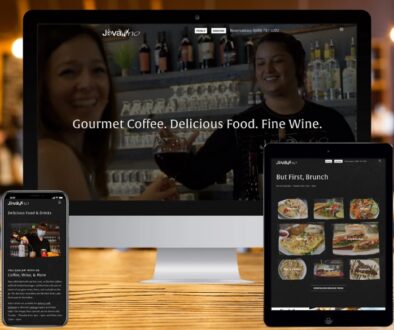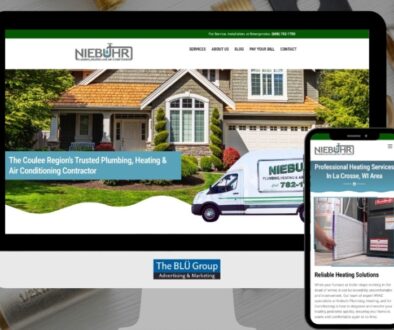How to Write a Marketing Email
Email marketing has come a long way in just the past few years. But with all the fancy new functionality brands are utilizing, you know what’s kind of funny? A well-written, plain-text email can perform just as well (if not better) than a highly designed email with tons of bells and whistles.
In fact, no matter how fancy your marketing emails look, if they’re devoid of well-written content, your subscribers will stop opening — and start deleting — your messages.
So, how do you write a great marketing email? It all comes down to a few copywriting best practices that you should apply to both the subject line of your message and the message body itself.
Next time you draft a message for a lead nurturing campaign or just a one-time email send, ask yourself whether your copy meets all of these guidelines first.
10 Email Copywriting Tips
We’ll start with copywriting tips for better subject lines, followed by copywriting tips for the bodies of your emails.
How to Write a Subject Line
Part of writing effective email copy is nailing the subject line. The subject line is like the gatekeeper of your email: No one gets to read your stellar email copy if they aren’t interested enough to open your email in the first place.
That interest is garnered almost wholly on the subject line of the email (with the sender name playing a role, as well). Here’s a distillation of what you need to know to write some excellent copy.
1) Use actionable language.
With email subject lines, using actionable language doesn’t necessarily mean using verbs, although it certainly helps. OpenTable, for example, sent me an email that said “Take Mom to Brunch” in the subject line. This is one way to use actionable language effectively in email subject lines: by incorporating a verb (like “take,” “download,” “reserve,” “ask,” “buy,” etc.), the reader knows exactly what they can do in the email.
But there are ways to use actionable language without relying on verbs, which gives you more room to play around with wording. What it comes down to is using language that makes it clear to the recipient what they can do with the information in the email, should they choose to open it. In other words, keep the value for the user top-of-mind.
For example, I once got an email from TicketMaster with the subject line “Don’t Miss Bruce Springsteen and the E Street Band.” They didn’t order me to purchase tickets by saying “Purchase Tickets Tomorrow for Bruce Springsteen and the E Street Band,” though such a subject line may have performed just as well. The original subject line worked well because it was clear what I could do with the information in that email — ensure I’m prepared for the 10:00 AM sale time so I could snag my tickets.
2) Personalize when possible.
Emails that are highly segmented tend to have higher performance levels — such as open rate and clickthrough rate — than emails that aren’t personalized. According to a study by Direct Marketing Association, segmented and targeted emails generated 58% of all revenue for the marketers surveyed, and 36% of revenues were driven by emails sent to specific target selections.
This isn’t exactly surprising. After all, the more segmented your email list, the better able you are to personalize the subject line and provide relevant content to that email recipient.
So ask yourself: Is there a way to make your email subject line more personal? And I’m not talking about the dynamic field where you insert someone’s [FIRSTNAME] — email recipients stopped being impressed by that fancy functionality some time ago.
Consider this scenario instead: You’re a realtor with a huge database of clients …
- Some of them are looking to rent, while others prefer to buy.
- Their ideal location ranges across several cities and zip codes.
- They all have different price points with which they’re comfortable.
- Some are looking for a studio, while others want a mansion.
- You even know that a group of them will only accept homes that have been renovated in the past 5 years.
You certainly wouldn’t do a blanket email send across all of these different segments of your list, would you?
And your email subject line wouldn’t be the same, either. You might have one subject line that says, “Renovated 1BR Apartment for Rent in Cambridge: Schedule a Viewing,” and another that says, “RSVP: Open House Sunday for Colonial House in Sudbury.” Each subject line speaks to the radically different needs of two radically different list segments.
3) Prioritize clarity, and only then think about “catchiness.”
Write a subject line that is clear first, and catchy second. In marketing copy, clarity should always, always, always be your first priority. If, after you’ve drafted a clear subject line, you can also make it catchy, funny, cute, whimsical, whatever, then go for it. But never sacrifice clarity for the entertainment value.
Some subject lines either make the recipients chuckle or are bizarre enough to pique your interest. But it is always extremely clear what you will get when you open the email.
… Which brings us to our next point.
4) Align your subject line copy and email copy.
You might already know how crucial it is for your call-to-action copy and your landing page offer to align. Well, it’s no different when crafting your email subject line and email message.
What your email subject line promises, the email message should deliver. Why? It’s not just because it’s responsible — it’s also because when readers don’t get what they’re actually promised in the subject line, click-through rates plummet. (And, in the long term, so will your email open rates.)
The key takeaway here? A high email open rate means nothing without any clickthroughs.
How to Write an Email
Now that you’ve crafted a stellar email subject line, you have your audience’s full attention on the body of your email message. So, how do you craft copy that will get them clicking? Here are the important components you need to know!
5) Establish relevancy.
Just like the email subject line should strive to establish relevancy through personalization, so should the copy in the message of the email.
Again, it takes more than just a dynamic name tag for your email copy to convince readers that what’s inside is relevant to them. So use the very beginning of the email to explain how you know each other.
6) Write in the second person.
Writing in the second person means using the pronouns “you,” “your,” and “yours.” For example, “Before you leave in the morning, remember to bring your jacket.” It means you orient the copy towards the reader, not yourself. This is a subtle tactic that helps you stay value-oriented, but this next step I’m about to cover is crucial to hitting the point home.
7) Talk about benefits, not features.
You know the value of your email. But does your recipient? No, not yet. And it’s your job to explain it.
The problem is, many emails only explain the feature they are offering, not the benefit.
8) Be brief.
One of the worst mistakes email copywriters make is trying to shove the entire story into the email message. Think about when you open a marketing email in your inbox. Do you read every single word in there? Probably not. It’s more likely that you scan for important points so you can glean the overall message, and decide whether you want to take any action.
So if you’re sending email with hundreds of words of copy, you’re making it much more difficult for recipients to decide whether they want to click through — simply because they can’t quickly sift through all of the information in your email.
Instead, find a way to summarize what the reader will get in a compelling way, and let them click through to a page on your website for more information.
Keeping your message on-point is the key to writing brief email copy. What’s the point you’re trying to make with your email? If you know the action your email is supposed to drive — recipient orders free lattes on-demand, recipient remembers to buy their Bruce Springsteen tickets, recipient gets motivated to work out — then you’ll have a much easier time drafting succinct email copy that remains focused on that one end goal.
If writing succinct email copy isn’t enough of a motivator for you to narrow down your goals, remember that having just one primary call-to-action in your email marketing results in better clickthrough rates than emails with competing calls-to-action.
9) Be lovable.
Just because emails are meant to inform doesn’t mean they can’t also delight. In some cases, email can be a great avenue for letting your brand’s personality shine, helping you build a meaningful relationship with the folks on your email lists. After all, providing a lovable experience for people begins and ends with how you communicate with them.
10) Use actionable language in your call-to-action.
That’s right: Emails have calls-to-action, too. Well, the good ones do. First and foremost, your email call-to-action should be extremely easy to identify. Remember: People scan their emails. If there’s one thing you want your recipient to pick up on, it’s your call-to-action.
If you’re sending an HTML email, you may decide to include a button.
There are two qualities that make a call-to-action button effective:
- Great design: It should stand out so that call-to-action isn’t hard to find.
- Great copy: The copy on the button is just as important. Your call-to-action button should include language that is succinct, clear, and action-oriented.
But it’s also crucial to spend some time optimizing your plain-text emails for clear calls-to-action. No matter how fancy your HTML email are, not all email clients will render your images, and not all email recipients will choose to display your images. In fact, we studied whether HTML emails or plain-text emails performed best and found that, while people say they prefer HTML-based and image-based emails, in reality, simpler emails perform best — and plain-text emails perform best of all. As such, the hyperlinked calls-to-action garner even more attention. When readers scan through the text and focus in on things like bolded words, images, and hyperlinked text, reiterating the same offer over and over hammers home for them exactly what you want them to do — redeem your offer by clicking your call-to-action.
Source: blog.hubspot.com




